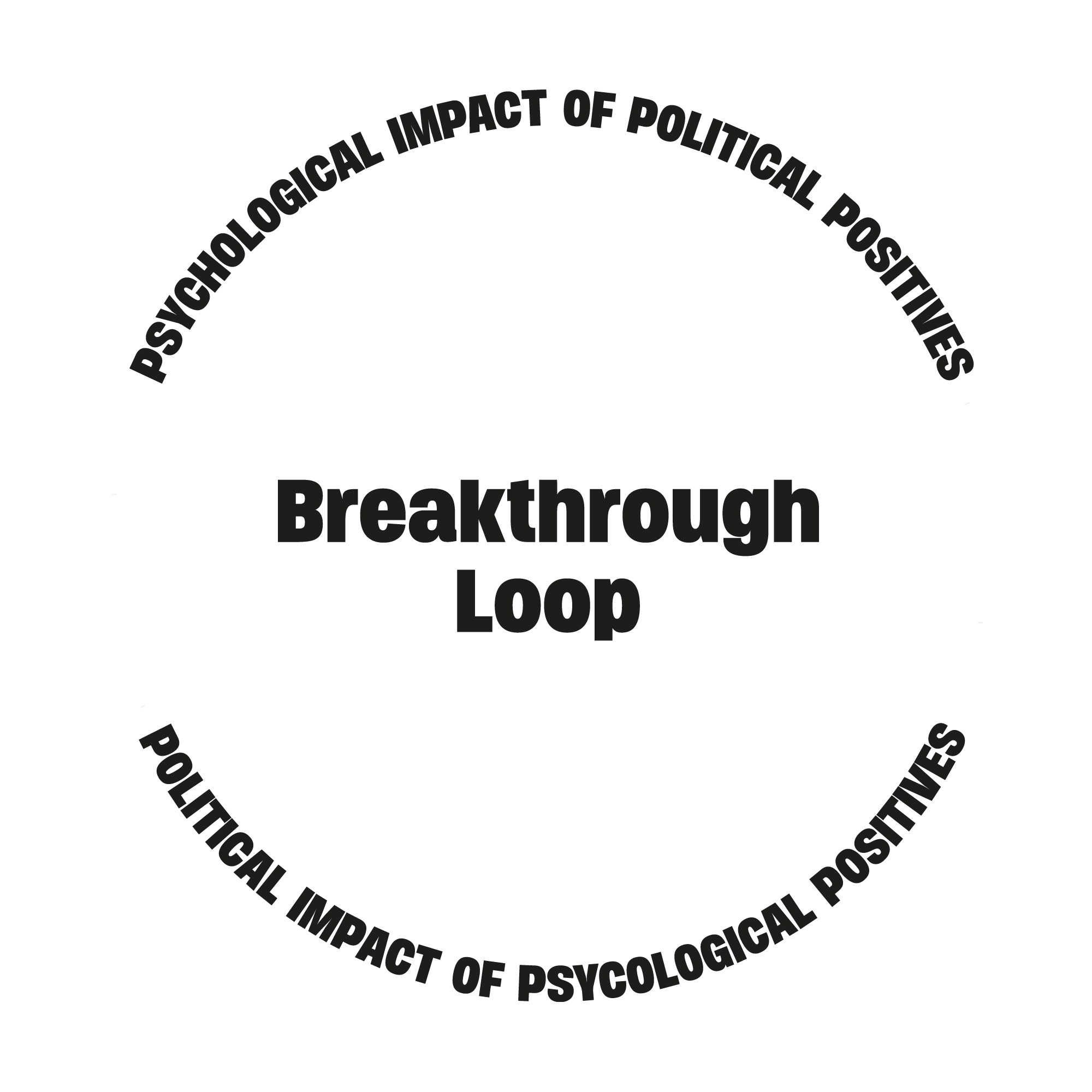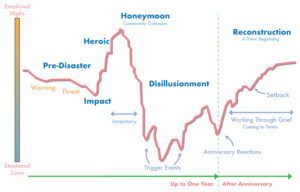Huge thanks to everyone at Larger Us – my brilliant colleagues Kate Pumphrey and Claire Brown, our board members Kirsty McNeill and Richard Chartres, and our adviser Liz Oldfield. What a pleasure and privilege it is to work with you.
Much of the scoping and research for this report was done in close partnership with Jon Alexander and Oliver Holtaway at New Citizenship Project and Panthea Lee and Corey Chao at Reboot. Laurenz Scheunemann added hugely to the sourcing, resources and references. Deep gratitude to all of them for their ideas and insights – and to Will Brett, Matt Carmichel, James Gray, Leila Hoballah, Tom Jeffery, Maike Kueper, Liz Oldfield and Ali Torabi for commenting on drafts of the report or the talks on which it’s based.
A big thank you to all our funders past and present: Avaaz, the Children’s Investment Fund Foundation, the Esmee Fairbairn Foundation, the Paul Hamlyn Foundation, and Unbound Philanthropy.
A special mention to people who’ve offered advice, support and encouragement at key moments, including Emma Williams, Matt d’Ancona, Iris Andrews, Tom Baker, Daniel Boese, Matt Carmichael, Claire Foster-Gilbert, Suncica Getter, Alex Glennie, Rich Gower, Kate Hampton, Paul Hilder, Alice Jay, Iona Lawrence, Charlie Leadbeater, Alastair McIntosh, Jeremy Oppenheim, Grace Owen, Ricken Patel, Kate Raworth, Cynthia Scharf, Liz Slade, Tim Smit, Will Somerville, Bert Wander, Stephanie Wong and Artie Wu: thank you all so much.
Deep appreciation to everyone who’s partnered up with us along the way, including Paulette Amadi, Alex Bos, Emma Burnell, Xiao Chao, Gina Crane, Jules Evans, James Goodman, Liz Griffin, Kate Hampton, Claire Harbron, Taryn Higashi, Esther Hughes, Hugh Knowles, Laura Lines, Marci Lopez, John Lucas, Jakub Mysona and the team at 56 Degrees, Kate Norgrove, Ben Pollard, Jonathan Price, Alasdair Roxburgh, Joe Ryrie, Beck Smith, Joe Smith, Will Somerville, Nick Stanhope, David Steven, Hilde Svartapmo, Laura Taylor, Casper Ter Kuile, Abi Thomas, John Verity, Katie White, Ivor Williams, and Miranda Wolpert.
Big thanks to everyone who’s helped shape these ideas at Larger Us and Collective Psychology Project events, or in conversations or correspondence – including Indra Adnan, Imran Ahmed, Seyi Akiwowo, Nisha Anand, Jeremy Armon, Andrew Barnett, Ali Beiner, Rich Bell, Tomas Bjorkman, Gail Bradbrook, Jamie Bristow, Gordon Brown, Fanny Calder, Madeleine Carroll, Sotez Chowdhury, Ian Christie, Carla Clarke, Chris Clarke, Brie Code, Thomas Coombes, Brendan Cox, Charly Cox, Isabel Crabtree-Condor, Jon Cracknell, Tom Crompton, Shenna Darcheville, Rich Darlington, Ed Davey, Celia Delaney, Tim Dixon, Tim Dutton, Irenie Ekkeshis, Madeleine Ellis-Petersen, Dave Fleischer, Corinne Fowler, Naomi Fowler, Oliver French, David Fuller, Joss Garman, George Graham, Duncan Green, Matt Green, Sara Grossman, Mónica Guzmán, Mike Haines, Desta Hall, Roger Harding, Katie Harrison, Dave Heinemann, Harry Hobson, Katie Hodgetts, Charles Holmes, Ruth Ibegbuna, Fatima Ibrahim, Kirsty Jenkins, Bruce Jones, Pat Kane, Sunder Katwala, Immy Kaur, Liam Kavanagh, Justin Kenrick, Roman Krznaric, Tahira Kulsoom, Vedantha Kumar, Ben Lane, Anthea Lawson, Neal Lawson, Naomi Lea, Mathieu Lefevre, Graham Leicester, Jeremy Lent, Adam Lerner, Sophie Livingstone, Paddy Loughman, Martha Mackenzie, Dami Makinde, Bruce Mann, Ben Margolis, Dona Markova, George Marshall, Hadiya Masieh, Binita Mehta-Parmar, Phil Metzler, Betty Mengistu, Florence Miller, Pete Moorey, Luis Morago, Jen Morgan, Gemma Mortensen, Turi Munthe, Emi Murphy, Aaron Myran, Jennifer Nadel, Sam Nadel, Genevieve Nathwani, Jessica Nicholls, Elvan Omay, Kathryn Perera, Haneefah Pervez, Tabatha Pilgrim Thompson, Amy Pollard, Tom Pravda, Ruth Prested, Sian Prime, Helena Puig-Larrauri, Carola Rackete, Skeena Rathor, Rupert Read, Cassie Robinson, Julia Roig, Leor Roseman, Jenny Ross, Jonathan Rowson, Emma Ruby-Sachs, Alice Sachrajda, Ella Saltmarshe, Eva Schonveld, Alex Smith, Alina Siegfried, Antonia Staats, Karen Stenner, Maria Stephan, Simon Stuart, Will Tanner, Peter Tavernise, Ruth Taylor, Sue Tibballs, Phoebe Tickell, Eloise Todd, Louisa Tomlinson, Luke Tryl, Arjan Van Houwelingen, Chris Venables, Martin Wall, Ros Watts, Louis Weinstock, Sam White, Sarah Wickens, Jez Wilkinson, Phil Wood, Robert Wright, and Jon Yates.
Above all, deep love and thanks as always to Emma, Isabel, and Kit.









